- Home
- Leisure & Lifestyle
- Home & Garden
- 8 things to sow and grow in the garden this autumn and winter
When it’s cold and dark outside, it’s not unusual to feel like you want to hibernate until spring – but if you have an interest in gardening, there’s plenty you can do over the next few months. Seeing splashes of colour in your garden can brighten up your day, and knowing you have something delicious to harvest in the New Year can be incredibly comforting.
While growing seeds and plants during the colder months can be more difficult than in spring or summer, there’s definitely life in the growing season yet!
To get you inspired, here are eight things to sow and grow in the garden this autumn and winter.
Tips for growing in autumn and winter

While you can absolutely sow plants and seeds in autumn and winter, it’s worth keeping in mind that it’ll naturally be a bit more challenging – and there’ll be less variety. Having a greenhouse or a polytunnel in your garden can make growing things infinitely easier. However, if you don’t, all is not lost.
For gardeners without a greenhouse, you might like to consider buying some garden fleece jackets to protect your plants from frost, hail, low temperatures and heavy winds. These can be bought from Amazon for around £10.
Another way to protect young plants is to buy a mini polythene tunnel, which will help to create a warmer microclimate and keep the cold wind out. Because polythene tunnels help prevent moisture loss and create humidity, they often produce stronger and healthier plants and allow you to grow plants that wouldn’t otherwise survive in the UK climate.
Polythene tunnels are available to buy on Amazon and start from around £10, so if you don’t have the money or space for a greenhouse, this is definitely the next best thing!
8 things to grow and sow in autumn and winter
So what are the best plants to sow and grow over the next few months? Here are our top picks.
1. Peas

If you love the idea of enjoying your own homegrown peas next year, there’s good news: you can usually sow peas right up until the very end of November.
While you won’t have actual pods of peas appear throughout the winter (that’ll happen in spring), if you sow peas now you’ll be able to pick their shoots, leaves, and tendrils. Many of the best restaurants in the UK use pea leaves and tendrils to garnish their plates – and they’re absolutely delicious in salads and sandwiches.
However, if you’re sowing peas in November, they can’t be any old peas. Pea seeds are either round or wrinkled, and it’s the round types that are hardy and can survive being sown in cold conditions.
The best types of round peas are varieties that you can cover to keep warm – so that’s generally dwarf varieties. Douce Provence or Meteor are your best bet – and because Meteor only grows to 45cm high, it’s ideal for pots and balconies too.
To find out more about growing peas, have a read of this guide from Gardener’s World.
2. Spring onions
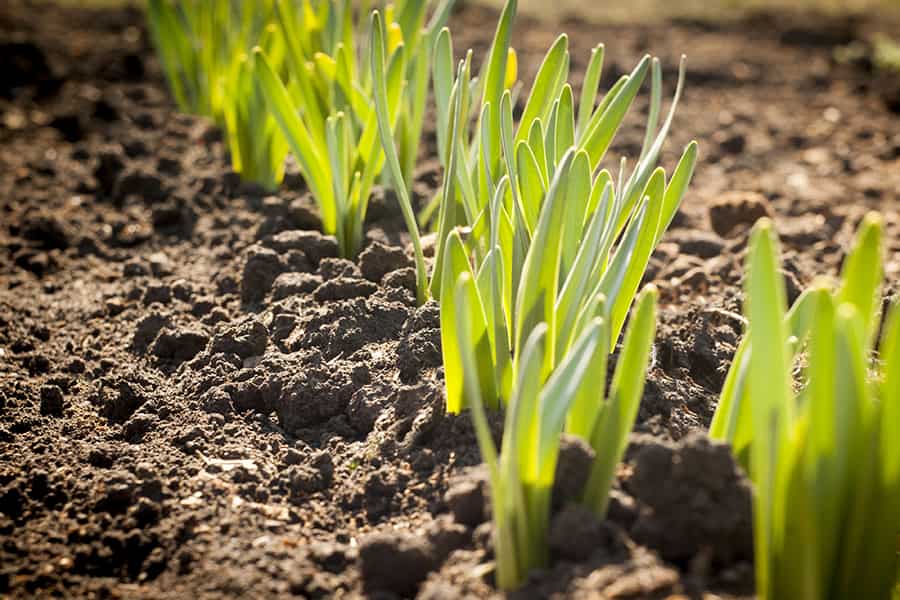
Spring onions might look dainty and delicate, but don’t let looks deceive you! Despite their appearance, spring onions are actually some of the hardiest vegetables you can grow – and even frosts and freezing temperatures won’t kill them. As the name suggests, you can plant certain varieties in late autumn or early winter and have your first crop ready to harvest by very early spring.
The best variety of spring onion to sow at this time of year is White Lisbon, which is considered the hardiest of all. And, due to its short cropping time, it’s a wise choice for new gardeners.
You might be lucky and get your first crop of spring onions just eight weeks after sowing – but if not, you can use the microgreens that appear first. Not only are these packed with vitamins, but they have a lovely, delicate flavour too and make a great addition to salads.
To find out more about growing spring onions, have a read of this guide from Thompson Morgan.
3. Snowdrops
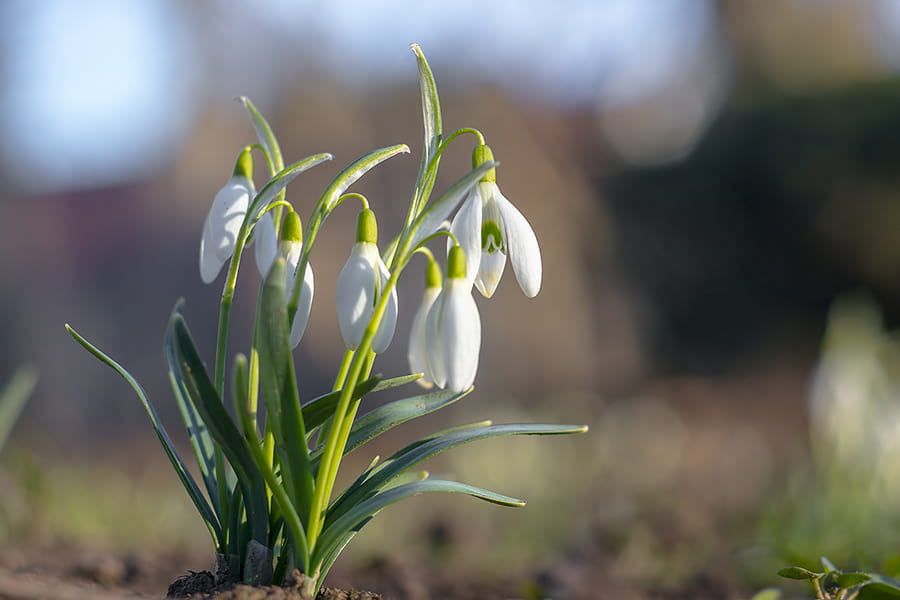
With their delicate white flowers, snowdrops symbolise the end of winter – and they’re also usually the very first bulbs of the year to bloom.
You can plant snowdrops throughout late autumn and even early winter, as long as the first frost hasn’t hit yet. And unlike other flowers, snowdrops don’t do well in containers, so it’s best to get them into the soil as soon as you can.
The best way to plant snowdrops is to buy them while they’re actively growing rather than from seed; this is called planting ‘in the green’.
These incredibly hardy flowers will bloom no matter what and are tough enough to push through frozen ground – even emerging beautifully through the snow. And because they’re a woodland plant, snowdrops like partial shade and moist soil, so they do especially well planted under trees and shrubs.
To find out more about growing snowdrops, have a read of this article by Gardeners World.
Get one month of Rest Less Events for free
Get unlimited access to 80+ online events every month. Discover educational talks and lectures, join beginner friendly fitness classes, discuss your favourite novels at book club, and explore new hobbies with creative workshops!
4. Garlic

Garlic is a kitchen staple, has many health benefits, and can be planted it from November anytime up until early spring.
Sowing garlic is also incredibly easy: just break open a bulb into individual cloves and plant them in rows. Because you only need around four inches in between each clove, this is a great crop to grow when you don’t have much space in your garden.
Another great thing about growing garlic is that it requires minimal care, which allows you to enjoy the festive season without worrying. Though, don’t forget it’s there and accidentally plant over it later!
In order for its bulbs to develop properly, garlic needs a decent period of cold weather. So while you won’t be able to eat the actual cloves until late spring or early summer, you’ll be able to enjoy the subtler flavours of the shoots and leaves a little earlier.
To find out more about growing garlic, have a read of this guide by RHS.
5. Mustard greens
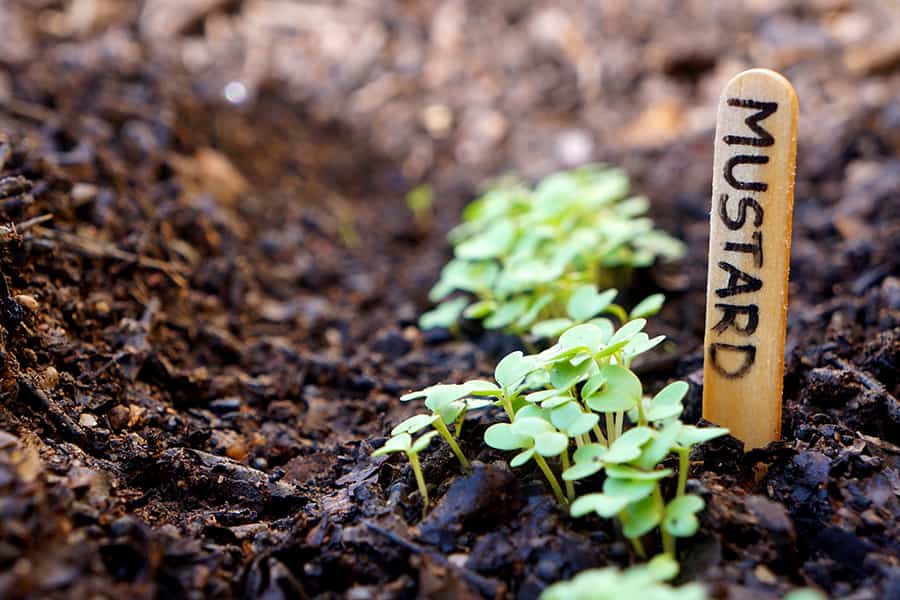
Of all the greens that can be sown and grown over winter, mustard greens are the hardiest. This means they’ll continue growing new leaves even in freezing conditions.
These punchy greens are so tough that they’re known for being able to spend days under a blanket of snow, before sprouting from the soil in perfect condition once the snow thaws.
When they’re raw, mustard greens are spicy, and best used sparingly in salads. The spice also makes raw mustard greens a great pest deterrent. However, when you cook them, the spiciness fades and you’re left with a deliciously rich flavour with only a very mild kick that makes a delightful addition to a variety of recipes.
If you plant mustard greens in November or December, you could have your first crop in January or February.
To find out more about growing mustard greens, have a read of this article from Harvest to Table.
6. Fritillaria
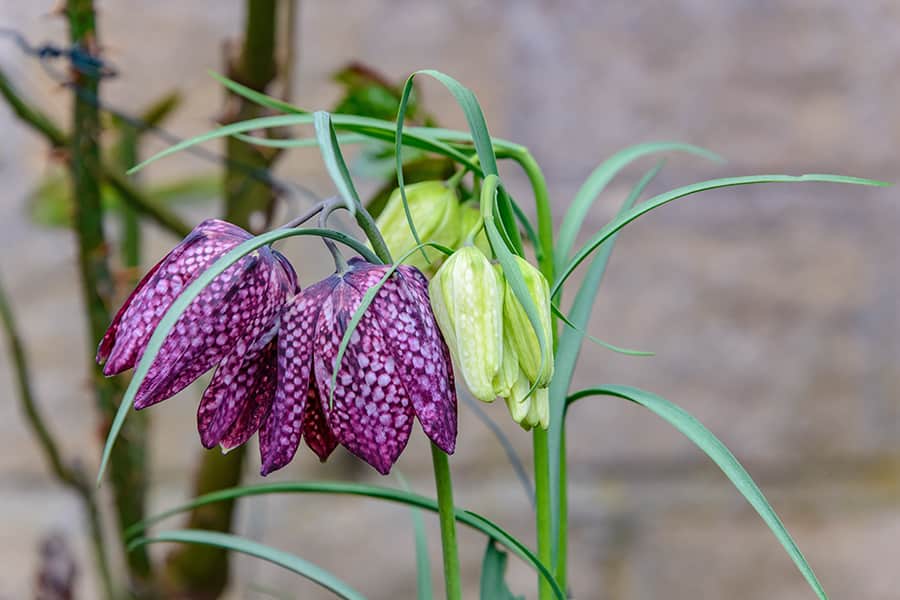
If you’re looking to add a splash of colour to your garden throughout the cooler months and aren’t fussed about eating what you grow, there are a range of lovely flowers you can plant throughout the autumn and winter months.
Flowers aren’t as tough as vegetables though, so most will benefit from being grown in a greenhouse. However, there are a few exceptions.
With their bright bell-shaped flowers, fritillaria are an ideal way to inject some vibrancy into your garden. These flowers can be planted from bulbs in late autumn and will survive the winter, even if temperatures drop below -10ºC.
When planted in November, fritillaria bulbs will grow roots shortly after going into the ground, before going dormant for the coldest months, then flowering in early spring.
To find out more about growing fritillaria, head over to the Gardens Illustrated website.
7. Broad beans
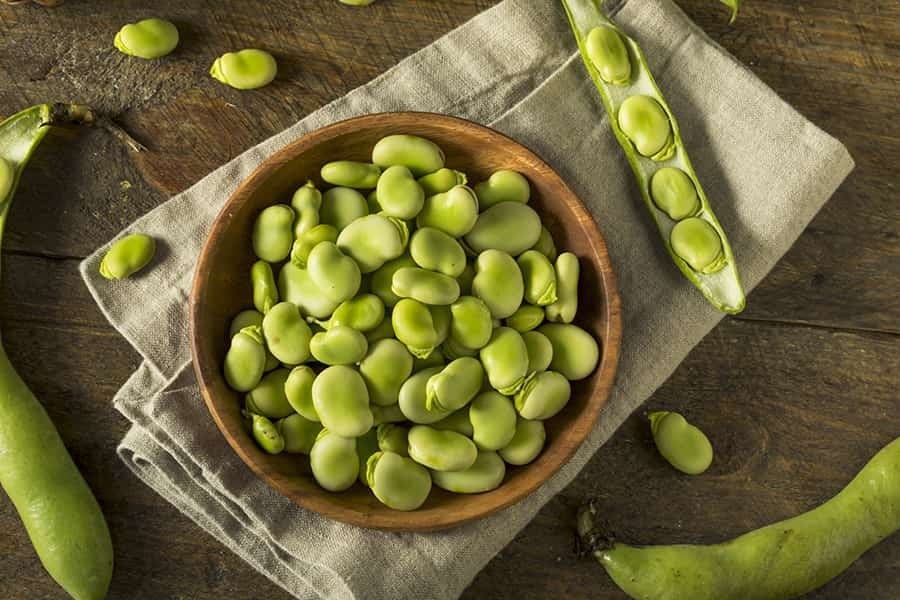
Of all the beans, broad beans are easily the hardiest – and if you sow them in late autumn or even early winter, you’ll get your first crop next season.
However, just like peas, broad beans also have super tasty and nutritious shoots and leaves that are ready to enjoy earlier on. They make an excellent addition to salads and stir-fries (or to jazz up your dinner plate!). In fact, many gardeners grow broad beans for their shoots and leaves alone.
Broad beans grow best when sown into two-inch deep trenches, spaced about six inches apart. The seedlings should appear within a few weeks, though they’ll remain small until it warms up a bit in spring.
Field beans are a specific variety of broad bean that does exceptionally well throughout winter, and while their beans are smaller than regular broad beans, they’re just as delicious.
To find out more about growing broad beans, have a read of this guide from Grow Veg.
8. Winter pansies

Pansies are known to be the ultimate cool weather flower, so it’s no surprise that they’re considered one of the best flowers to grow if you want to see blooms in the winter months.
While September and October are generally considered the optimum months to plant pansies to see them flower in the winter season, they can also be planted in November.
Autumn and winter pansies are typically sold as bedding plants and can be planted straight into the ground for instant colour. If you’re planting winter pansies in late autumn, it’s best to plant more than usual and plant them closer together as this will ensure the biggest impact when they bloom!
Winter pansies should flower throughout the winter months and have a final explosion of colour at the very end of winter. If you plant pansies in December – they’ll still flower; you might just have to wait until early spring for the full bloom.
To find out more about growing winter pansies, have a read of this guide from Country Living.
Get one month of Rest Less Events for free
Get unlimited access to 80+ online events every month. Discover educational talks and lectures, join beginner friendly fitness classes, discuss your favourite novels at book club, and explore new hobbies with creative workshops!
Final thoughts...
It’s easy to think that as the colder, darker days draw in, it’s time to hang up your gardening gloves. But there’s good news for the keen gardeners among us, because there are plenty of things to sow and grow throughout the autumn and winter months.
So if you usually save gardening for the warmer months, why not try planting something new this year? Chances are, you’ll be enjoying the results of your efforts in a few months to come.
For more gardening-related content, head over to the home and garden section of our website. Here you’ll find everything from easy-to-grow vegetables to plants you can grow that are good for your health.
Selene Nelson is an author, freelance journalist, and lifestyle writer for Rest Less. After graduating from the University of Sussex with a degree in English Literature, Selene began contributing to many major newspapers and websites, and has written for the BBC, The Sunday Times, The Independent, Town & Country, and HuffPost. Her specialist subjects include food, travel, and health, though she enjoys writing about a wide range of topics (e.g. her two books are about veganism and psychopathy, respectively!). She enjoys cooking (particularly pasta and Asian noodle soups), reading, travelling, hiking, attempting to keep fit, and watching animal videos on YouTube.
* Links with an * by them are affiliate links which help Rest Less stay free to use as they can result in a payment or benefit to us. You can read more on how we make money here.
Free NHS eye tests plus 10% off glasses for over 60s
Booking an appointment online has never been easier, and with a range of offers from 10% off if you’re over 60, 2nd pairs half price & a free NHS eye test if eligible, our expert optometrists are here to help you on your journey to clearer vision.
